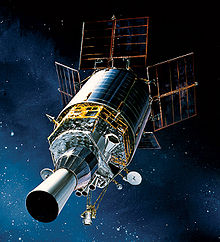Wikipedia:WikiProject Military history/News/August 2016/Book reviews
|
An Unending War: The Australian Army's Struggle Against Malaria, 1885–2015 |

![]()
![]()
![]()
![]()
![]()
- By Hawkeye7
This is a slim but comprehensive and readable book about the Australian Army's experience with malaria. It was written by Ian Howie-Willis, who has authored several books on military medical subjects. He suffered attacks of malaria during his time in Papua-New Guinea in the 1960s and '70s.
Malaria is a parasite spread by mosquitoes, a fact discovered by Ronald Ross and Giovanni Battista Grassi over a century ago. It is very widespread; though some 79 countries (including Australia, in 1981) have eliminated the disease. The Australian Army encountered it in New Guinea and the Middle East in the First World War. The most serious occurrence was in October 1918, when the Desert Mounted Corps suffered 636 casualties in battle, of whom 149 died, but 11,400 from malaria, of whom 101 died.
The military problem that malaria poses is not that it kills, but that it takes large numbers of soldiers out of action and floods the hospitals with cases. In the fighting in Papua in late 1942 and early 1943, there were three cases of malaria for every battle casualty, an incidence equivalent to 2,496 per thousand per annum. At this rate, General Douglas MacArthur (who suffered an attack of malaria in the Philippines in 1904) would have needed two Australian and American divisions in hospitals for every one at the front. Fortunately, through the work of Neil Hamilton Fairley, the crisis was averted. The LHQ Medical Research Unit pioneered the treatment of malaria and the development of new drugs.
The Australian Army thought that it had defeated the disease, but a sign of things to come occurred in the Aitape–Wewak campaign in 1945, when a strain of malaria resistant to the drug being taken was encountered. This was countered by increasing the dosage. It recurred in 1968, during the Vietnam War, when a strain resistant to the paludrine that the troops were taking appeared. An ethical dilemma then arose as to whether to give the troops dapsone, an untried drug known to be toxic. By the 21st century, it was clear that the world is losing the fight, and unless someone comes up with a vaccine soon, we will be worse off than we were a century ago.
I think this is an interesting topic, and the book a solid, wide-ranging account. If this is all news to you, you will enjoy it.
Publishing details: Howie-Willis, Ian (2016). An Unending War: The Australian Army's Struggle Against Malaria, 1885–2015. Australian Army History Collection. Newport, New South Wales: Big Sky Publishing. ISBN 978-1-92527-572-8. OCLC 951443591.
America's Space Sentinels: The History of the DSP and SBIRS Satellite Systems |

![]()
![]()
![]()
![]()
![]()
- By Hawkeye7
Let me start by saying that this is my kind of book: loaded with technical information, liberally seasoned with abbreviations, rich in depictions of bureaucratic and budgetary minutiae, and partly written in an obscure dialect of English known as Pentagonese. So it's not for everyone; but if that is to your taste then this is a rewarding reading experience.
In the 1950s, the United States maintained a system of radar outposts in Canada and Alaska known as the Distant Early Warning Line, or DEW Line. This could detect bombers, but the development of the intercontinental ballistic missile made it obsolete. The US Air Force initiated a program to spot the launch of missiles with infra-red detectors on satellites. The idea proved practical, although whether the cost of the system was worth the extra thirty minutes warning it could give was debated.
A prototype Missile Defense Alarm System (MiDAS) was deployed in the 1960s. This was followed by the Defense Support Program (DSP) in the 1970s. Because a geosynchronous satellite watching Russia and China is never over the United States, a ground station was established at Nurrungar in Australia. DSP was followed by the Space-Based Infrared System, which takes the story up to the present day. The value of the satellites exceeded all hopes.
The Wikipedia articles on the subject are fairly well written but desperately in need of sources. This is where you'll find them.
Publishing details: Richelson, Jeffrey (2012). America's Space Sentinels: The History of the DSP and SBIRS Satellite Systems (second ed.). Lawrence, Kansas: University Press of Kansas. ISBN 978-0-7006-1879-8. OCLC 788282683.
Recent external reviews |
Hart, Marjolein 't (2014). The Dutch Wars of Independence: Warfare and Commerce in the Netherlands 1570-1680. Abingdon, United Kingdom: Routledge. ISBN 0582209676.
Martines, Lauro (2013). Furies: War in Europe, 1450-1700. New York: Bloomsbury Press. ISBN 978-1608196180.
- Tiegs, Robert (July 2016). "New Perspectives on Early Modern Warfare". H-Net Reviews. H-Net Humanities & Social Sciences Online.
Sebag-Montefiore, Hugh (2016). Somme: Into the Breach. London: Viking. ISBN 0674545192.
- Thomson, Ian (4 July 2016). "Somme: Into the Breach by Hugh Sebag-Montefiore review". The Observer.
Faulkner, Marcus (2015). The Great War At Sea: A Naval Atlas 1914–1919. Barnsley, United Kingdom: Seaforth Publishing. ISBN 184832183X.
- Coyle, Tim (8 July 2016). "The Great War At Sea: A Naval Atlas 1914–1919". Australian Naval Institute.
Carlton, Mike (2016). Flagship: The Cruiser HMAS Australia II and the Pacific War on Japan. North Sydney, Australia: William Heinemann Australia. ISBN 9780857987778.
- Fitzgerald, Ross (30 July 2016). "Mike Carlton's Flagship: how HMAS Australia II beat off the kimakazes". The Australian.
Brooks, Rosa (2016). How Everything Became War and the Military Became Everything: Tales from the Pentagon. New York City: Simon & Schuster. ISBN 1476777861.
- Evans, Harold (5 August 2016). "Rosa Brooks Examines War's Expanding Boundaries". The New York Times.
|


